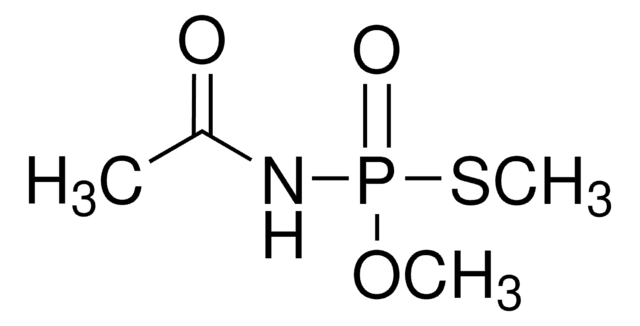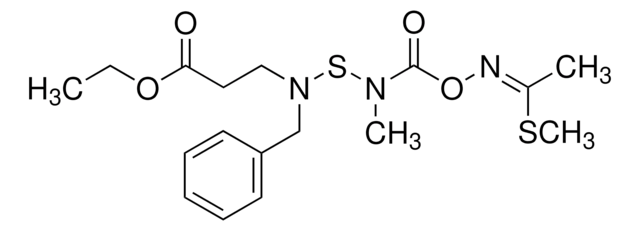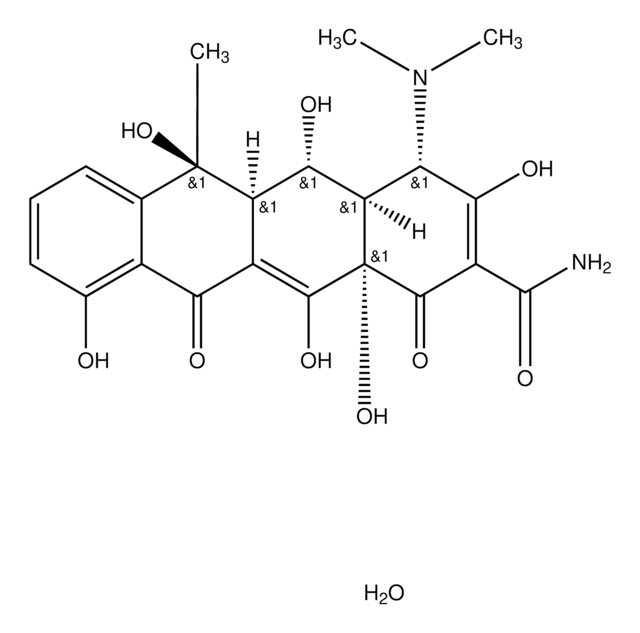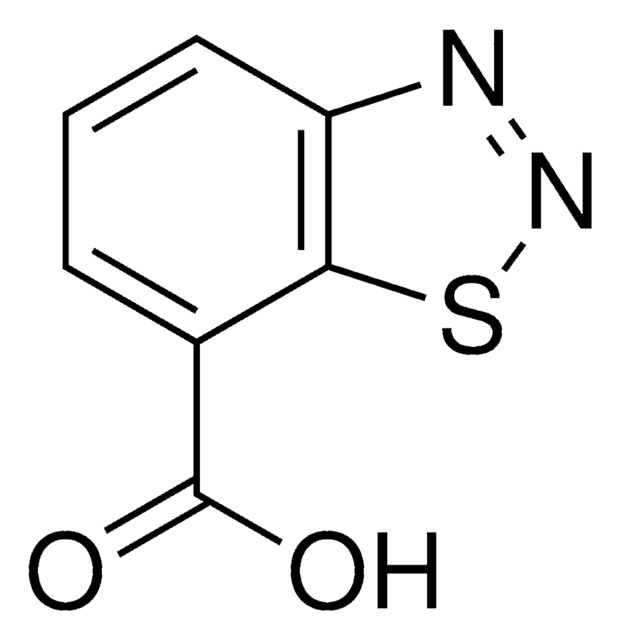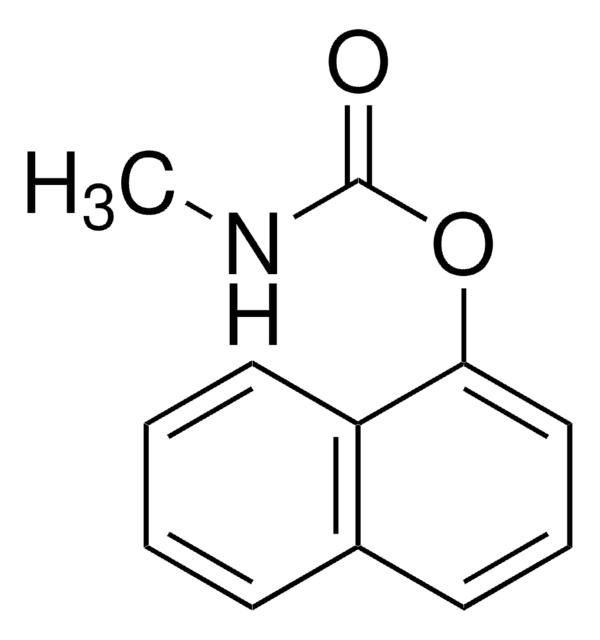31464
Anilazine
PESTANAL®, analytical standard
Sinónimos:
6-(2-Chloroanilino)-2,4-dichloro-1,3,5-triazine
About This Item
Productos recomendados
grade
analytical standard
Quality Level
product line
PESTANAL®
technique(s)
HPLC: suitable
gas chromatography (GC): suitable
application(s)
agriculture
environmental
format
neat
storage temp.
2-8°C
SMILES string
Clc1nc(Cl)nc(Nc2ccccc2Cl)n1
InChI
1S/C9H5Cl3N4/c10-5-3-1-2-4-6(5)13-9-15-7(11)14-8(12)16-9/h1-4H,(H,13,14,15,16)
InChI key
IMHBYKMAHXWHRP-UHFFFAOYSA-N
¿Está buscando productos similares? Visita Guía de comparación de productos
Application
Legal Information
signalword
Warning
hcodes
Hazard Classifications
Aquatic Acute 1 - Aquatic Chronic 1 - Eye Irrit. 2 - Skin Irrit. 2
Storage Class
11 - Combustible Solids
wgk_germany
WGK 3
flash_point_f
Not applicable
flash_point_c
Not applicable
ppe
dust mask type N95 (US), Eyeshields, Faceshields, Gloves
Elija entre una de las versiones más recientes:
¿Ya tiene este producto?
Encuentre la documentación para los productos que ha comprado recientemente en la Biblioteca de documentos.
Nuestro equipo de científicos tiene experiencia en todas las áreas de investigación: Ciencias de la vida, Ciencia de los materiales, Síntesis química, Cromatografía, Analítica y muchas otras.
Póngase en contacto con el Servicio técnico
